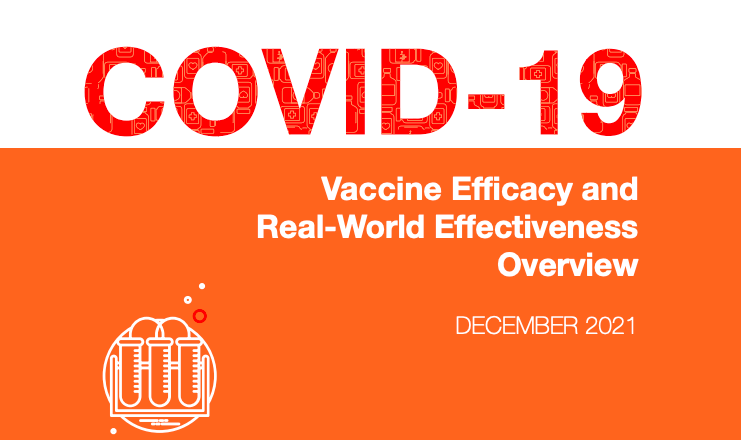
By November 2021, globally, more than five million deaths were offcially attributed to COVID-19, the illness caused by the SARS-CoV-2 virus. The Economist estimates the actual death toll at close to 20 million, based on excess mortality rates during the global pandemic.
Although large gaps in our knowledge of SARS-CoV-2 remain, the rapid development of COVID-19 vaccines is an ongoing and remarkable scientifc response to the global pandemic. These vaccines, which use different platforms to generate immune responses to SARS-CoV-2, have proven safe and effective in clinical trials, and are being rolled out across the world – albeit inequitably – on an emergency basis. Nonetheless, billions of people have become de facto participants in testing safety, effectiveness, and durability of these vaccines in the real world.
In this overview, we summarize two sets of currently available data: from randomized, placebo controlled, Phase III clinical trials that provide baseline effcacy estimates, and observational studies estimating real-world effectiveness after vaccine roll-out.
There are hundreds of vaccine candidates in various stages of development world-wide. Here, we focus on vaccines included (and submitted: Sputnik V) in the World Health Organization (WHO) Emergency Use Listing (EUL) as of November 2021:
- Pfzer-BioNTech (BNT162b2, Comirnaty);
- Moderna (mRNA-1273, SpikeVax);
- AstraZeneca-Oxford (ChAdOx1, AZD1222, Vaxzervia/Covidshield);
- Johnson and Johnson-Janssen (Ad26.COV2.S);
- Bharat Biotech (BBV152, Covaxin);
- Gamaleya (Gam-COVID-Vac, Sputnik V);
- Sinovac (CoronaVac); and
- Sinopharm (BBIBP-CorV/VeroCell).
We have provided explanations of immune responses and how vaccines using different platforms trigger these responses.
